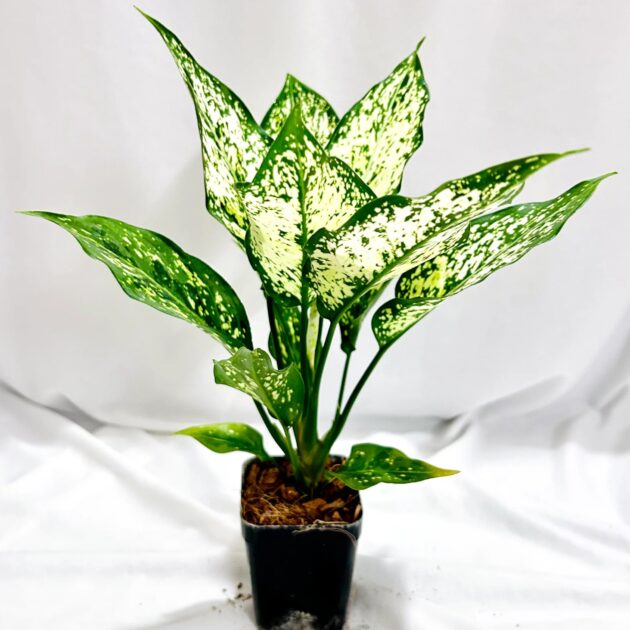

Ruthratcham plant
₹499.00 Original price was: ₹499.00.₹329.00Current price is: ₹329.00.
Details:
The Ruthratcham plant (Acalypha wilkesiana) is a vibrant and ornamental shrub valued for its striking, multicolored foliage. It is an excellent choice for gardeners looking to add a splash of color to their landscapes or indoor spaces. While it has limited medicinal use, it is mainly grown for its aesthetic appeal. Its care requirements are relatively simple, making it an easy addition to tropical and subtropical gardens.
Description
The Ruthratcham plant, also known as Acalypha wilkesiana, is a shrub native to the tropical regions of Asia and the Pacific. It is often admired for its striking ornamental foliage and is widely cultivated as an ornamental plant in gardens and landscapes.
Scientific Name:
- Acalypha wilkesiana
Common Names:
- Ruthratcham (Tamil)
- Copperleaf or Red Hot Cat’s Tail
- Firetail (due to its vivid red flowering spikes)
- Indian Copperleaf
Description:
- Size: The Ruthratcham plant is a medium-sized shrub that typically grows to a height of 1.5–3 meters (5 to 10 feet). It can spread up to 1 meter in width, making it ideal for hedges, borders, or decorative planting.
- Leaves: The leaves of the Ruthratcham plant are large, ovate (heart-shaped), and have a striking multicolored appearance. The colors can range from deep reds to green, with some varieties having pink, purple, or yellow streaks, making it an attractive foliage plant. The leaves have a glossy texture and are arranged alternately on the stem.
- Flowers: The flowers of the Ruthratcham are small, cylindrical, and inconspicuous. The plant produces spike-like clusters of red, pink, or yellow flowers, which are quite attractive to pollinators such as bees and butterflies. The flowering occurs during the summer and fall seasons.
- Fruit: After flowering, the plant produces small, capsule-like fruits that contain seeds. These fruits are not as prominent as the colorful leaves and flowers but contribute to the plant’s reproductive cycle.
Habitat:
- Native Region: The Ruthratcham plant is native to tropical and subtropical regions of Asia, especially in areas like India and the Pacific Islands.
- Growing Conditions: It thrives in well-drained, fertile soils and prefers full sunlight or partial shade. The plant is highly adaptable and can be grown in various soil types, from sandy to loamy soils, but it needs good drainage to avoid waterlogging.
Ornamental Use:
- The Ruthratcham plant is primarily grown for its ornamental value due to its striking, multicolored foliage. It is often used in:
- Landscaping: It can be planted as a border, hedge, or as a focal point in gardens.
- Decorative pots: Due to its vibrant colors, it is also used in containers or pots for patios, balconies, or as an indoor plant.
- Ground cover: It is sometimes used as ground cover for low-maintenance garden designs, especially in tropical and subtropical areas.
Medicinal Uses:
While the Ruthratcham plant is primarily valued for its ornamental qualities, in some traditional medicine systems, parts of the plant have been used for minor ailments. However, the plant’s medicinal use is not as well-established as some other plants.
- Leaves: In certain cultures, the leaves of the plant are sometimes used in herbal preparations for treating wounds or as a remedy for fever. The leaves are believed to have mild anti-inflammatory properties.
However, it’s important to note that Ruthratcham is not commonly used in mainstream medicine, and its medicinal applications are limited and not well-documented.
Care and Cultivation:
- Sunlight: Ruthratcham plants require full sunlight for the best color intensity in the leaves. However, they can also tolerate partial shade, making them versatile for different garden settings.
- Watering: These plants prefer regular watering, especially in the growing season. However, they should not be overwatered, as this can lead to root rot. Allow the soil to dry out between waterings.
- Soil: The plant thrives in well-drained soil. A mixture of loamy or sandy soil is ideal. It’s important to avoid waterlogged conditions, so ensure that the planting area has good drainage.
- Temperature: Ruthratcham plants grow best in tropical and subtropical climates. They are not frost-tolerant, so they should be protected from cold weather. They prefer warm temperatures between 20°C to 30°C (68°F to 86°F).
- Pruning: Regular pruning is essential to keep the plant’s shape neat and encourage new growth. It can be pruned after flowering to maintain its compact form.
Ecological Importance:
- The Ruthratcham plant, while primarily ornamental, provides benefits to the local ecosystem. The plant attracts pollinators such as bees, butterflies, and hummingbirds, contributing to the overall health of the garden environment.
Environmental Impact:
- Non-invasive: The Ruthratcham plant is generally not considered invasive but may spread in tropical regions if not properly maintained. It is mostly cultivated in gardens and landscapes and does not typically spread into natural ecosystems.



Reviews
Clear filtersThere are no reviews yet.